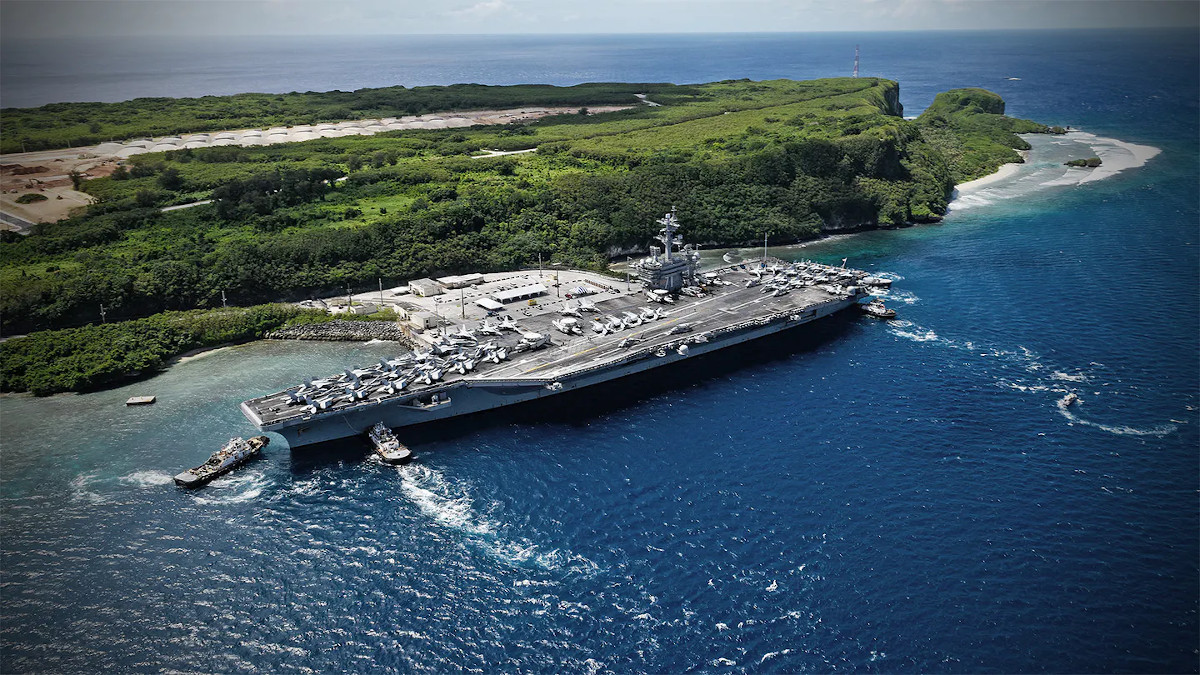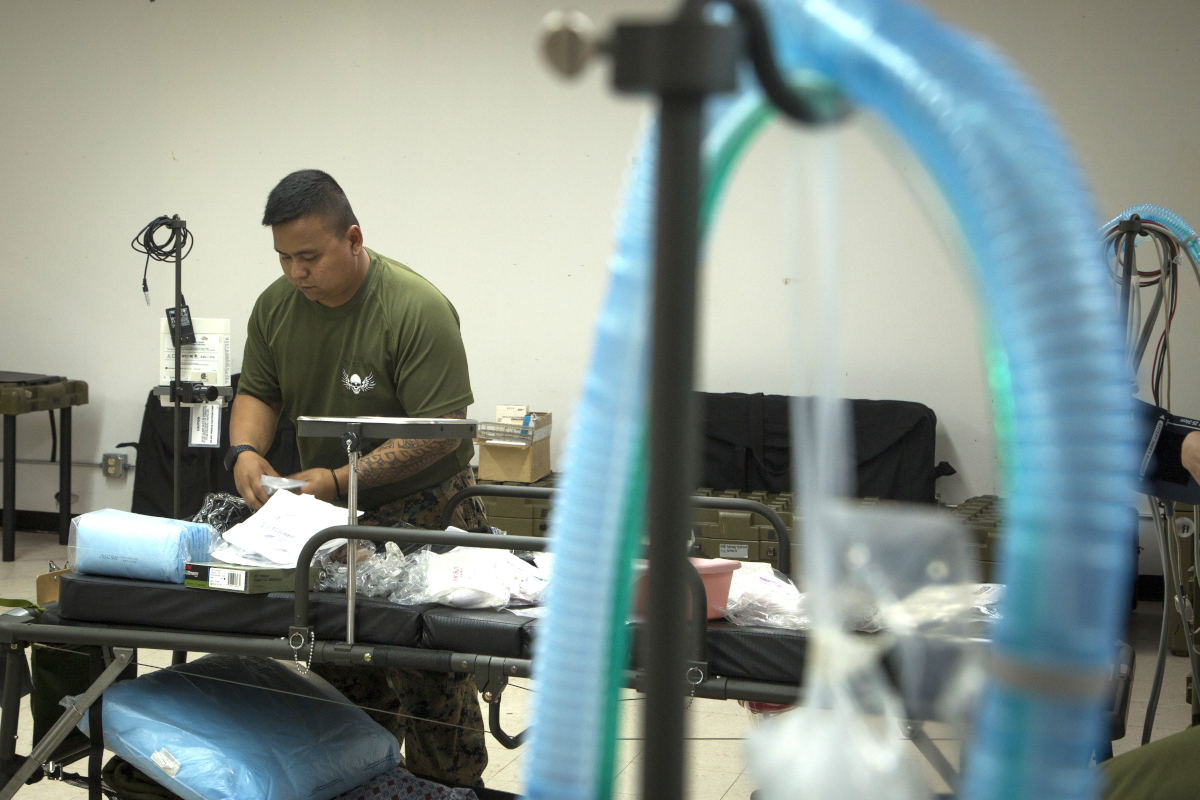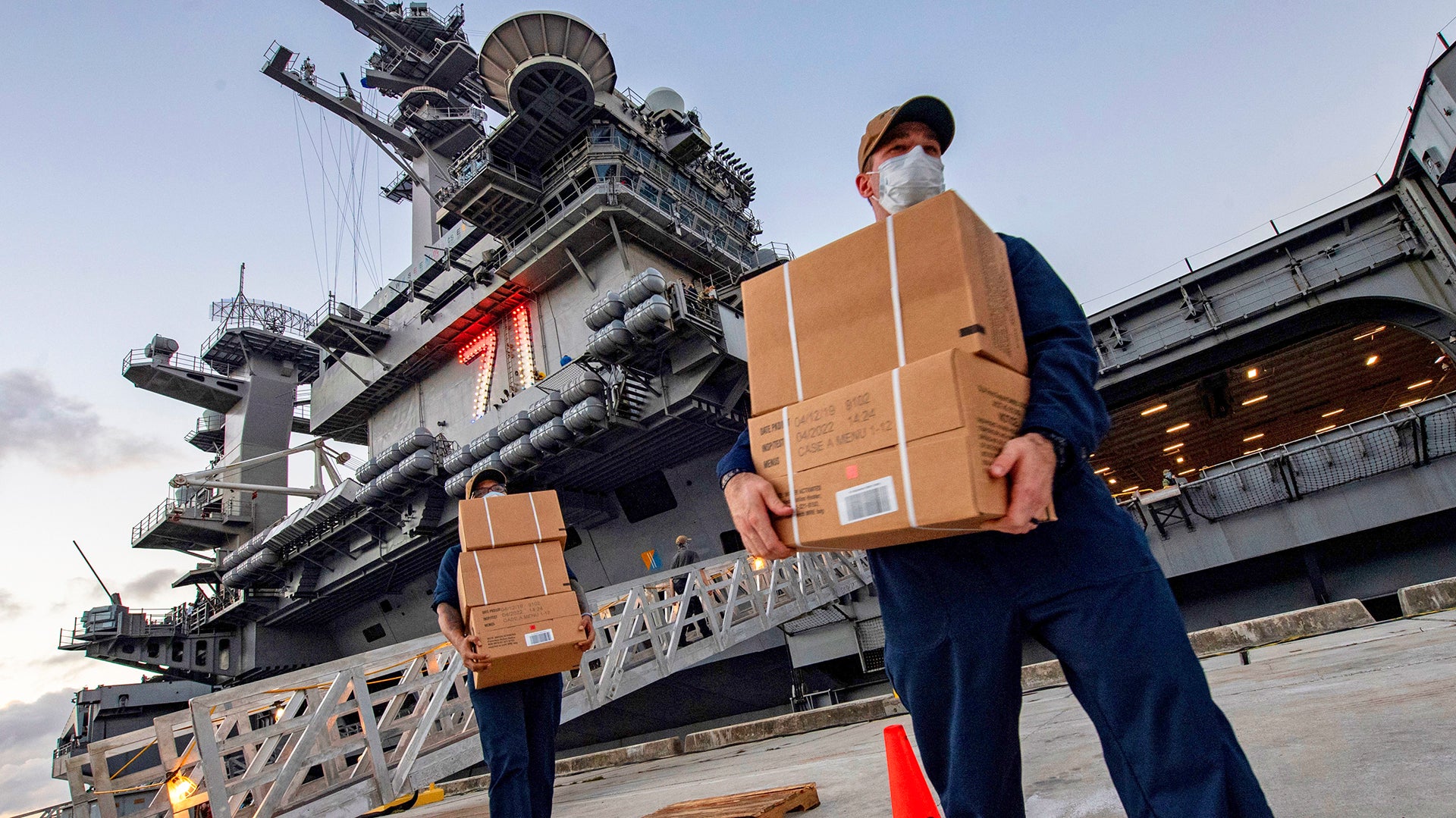A U.S. Navy sailor assigned to the Nimitz class aircraft carrier USS Theodore Roosevelt has died of complications related to the COVID-19 novel coronavirus. The ship is presently docked in Guam and has been experiencing a major outbreak of the virus, has been at the center of a political firestorm after its former commanding sent an unprecedented letter to his superiors begging to get the bulk of the crew into quarantined lodging ashore to “prevent tragic outcomes.” Captain Brett Crozier was relieved of command after the letter leaked to the press, ostensibly over a breach of protocol, which then off a whirlwind chain of events that led to the resignation of Acting Secretary of the Navy Thomas Modly last week.
The Office of the Navy Chief of Information, the service’s top public affairs office, announced the death on Apr. 13, but did not release the individual’s name, rank, or role on the Theodore Roosevelt, pending notification of next of kin. The Navy confirmed that the sailor who died was the same one that had been rushed to a hospital and put into an intensive care unit (ICU) on Apr. 9 after they were found unresponsive while in quarantine at Naval Base Guam during a routine medical check.
“The Sailor tested positive for COVID-19 [on] March 30, was removed from the ship and placed in an isolation house on Naval Base Guam with four other USS Theodore Roosevelt (CVN 71) Sailors,” according to the Navy statement. “Like other Sailors in isolation, he received medical checks twice daily from Navy medical teams.”
The Roosevelt has been in Guam since Mar. 27, after a number of sailors tested positive for COVID-19. At the time of writing, the Navy has now tested 92 percent of the more than 4,000 personnel assigned to the ship, with a total 585 confirmed cases of the virus, so far. Captain Crozier is reportedly among those who have contracted the virus. The outbreak among the crew of the carrier also represents the majority of the Navy’s known cases, which, as of Apr. 10, stood at 741. It also represents a significant portion of the total 2,567 confirmed cases among uniformed U.S. military personnel and is greater than that of any of the other services’ total cases.
Another 3,724 of the Roosevelt‘s crew have tested negative, but it is worth noting that a number of individuals on the carrier initially tested negative before testing positive. The Navy has moved a total of 3,967 sailors from the ship to lodging on Guam, including hotels and spare rooms. All of those individuals are undergoing a 14-day quarantine process.
In his letter, dated Mar. 30, the same day the individual who died tested positive for COVID-19, Captain Crozier proposed moving 90 percent of his crew ashore, leaving just 10 percent to continue performing critical functions, such as operating and maintaining the carrier’s two nuclear reactors, and providing security. Doctors on the ship warned that more than 50 sailors could die if drastic steps weren’t taken, given the virtual impossibility for the crew to practice social distancing and other techniques to mitigate the spread of the virus while working and living in such close quarters. This reality, which applies to all naval vessels, including submarines, broadly, is something The War Zone
had highlighted as a major issue when the Roosevelt first arrived in Guam.

“We are not at war. Sailors do not need to die,” Crozier had written. “If we do not act now, we are failing to properly take care of our most trusted asset – our Sailors.”
The Navy balked at Captain Crozier’s proposal and accused him of being alarmist. This was despite the fact that the outbreak reportedly started among personnel in charge of running Roosevelt’s nuclear reactors, presenting a serious risk to the ship’s ability to operate at all, according to a recent report from The New York Times.
The Times also reported that Rear Admiral Stuart Baker, the commanding officer of the entire Theodore Roosevelt Carrier Strike Group, had argued with Crozier beforehand and said less severe measures could prevent the COVID-19 cases from getting out of hand. Baker later told then-Acting Secretary of the Navy Modly he had not been aware of the captain’s letter in advance.
Modly relieved Crozier of command on Apr. 2 officially over sending his letter, which contained granular information about the state of the ship, to a large number of recipients in an unclassified format, increasing the likelihood it would be leaked to the press. On Apr. 3, Admiral Robert Burke, the Vice Chief of Naval Operations, the service’s second-highest-ranking uniformed officer, also reportedly called the Roosevelt‘s senior medical officer and said they had “failed as a leader,” according to The Times. Formal investigations continue into Crozier’s conduct and the “command climate” among ships and other units assigned to the Navy’s Pacific Fleet.

The then-Acting Secretary of the Navy, together with other senior Navy officials subsequently flew to Guam. Modly then gave his now infamous speech on the ship, in which he chastised Crozier, the crew, and the media, setting off a chain of events that would end with his resignation. There are now calls to reinstate Crozier’s command.
The Navy, as well as the rest of the U.S. military, is still struggling with how to balance its continuing operational demands with the implementation of social distancing and other mitigating strategies to prevent the spread of COVID-19 within its ranks. USNI News
was first to report last week that the Navy had issued more rigid guidelines for how to monitor for possible cases, when to test, how to isolate, and other steps personnel should take to keep ships and facilities clean, as well as a framework for how to respond to outbreaks among personnel in various stages of the readiness cycle, in the wake of the Theodore Roosevelt situation.
It remains to be seen whether Crozier will resume his previous role as the carrier’s commanding officer or what the trajectory of his career may have now. Hopefully, the steps that the Navy is taking now will limit any further fatalities among the Roosevelt‘s crew.
We will continue to update this story are more information becomes available.
Contact the author: joe@thedrive.com
